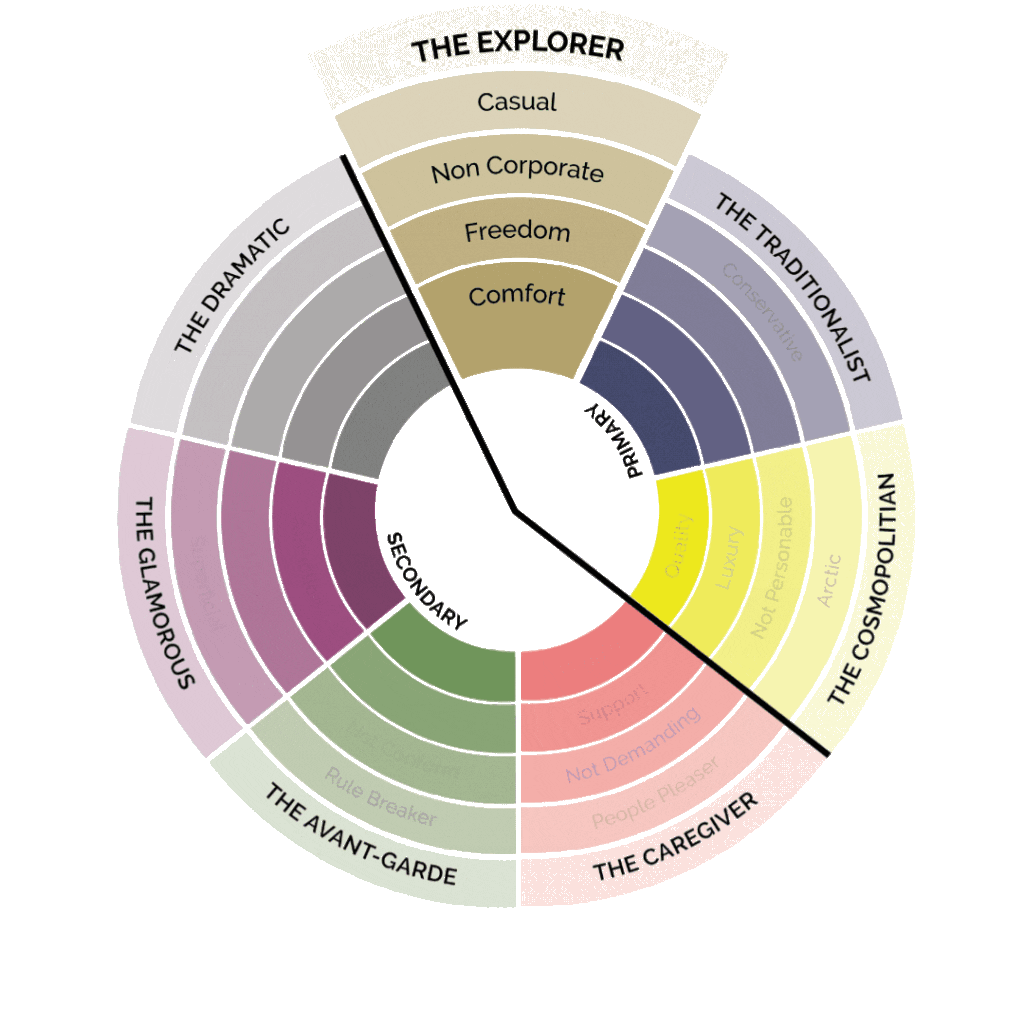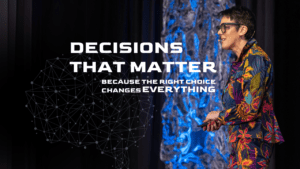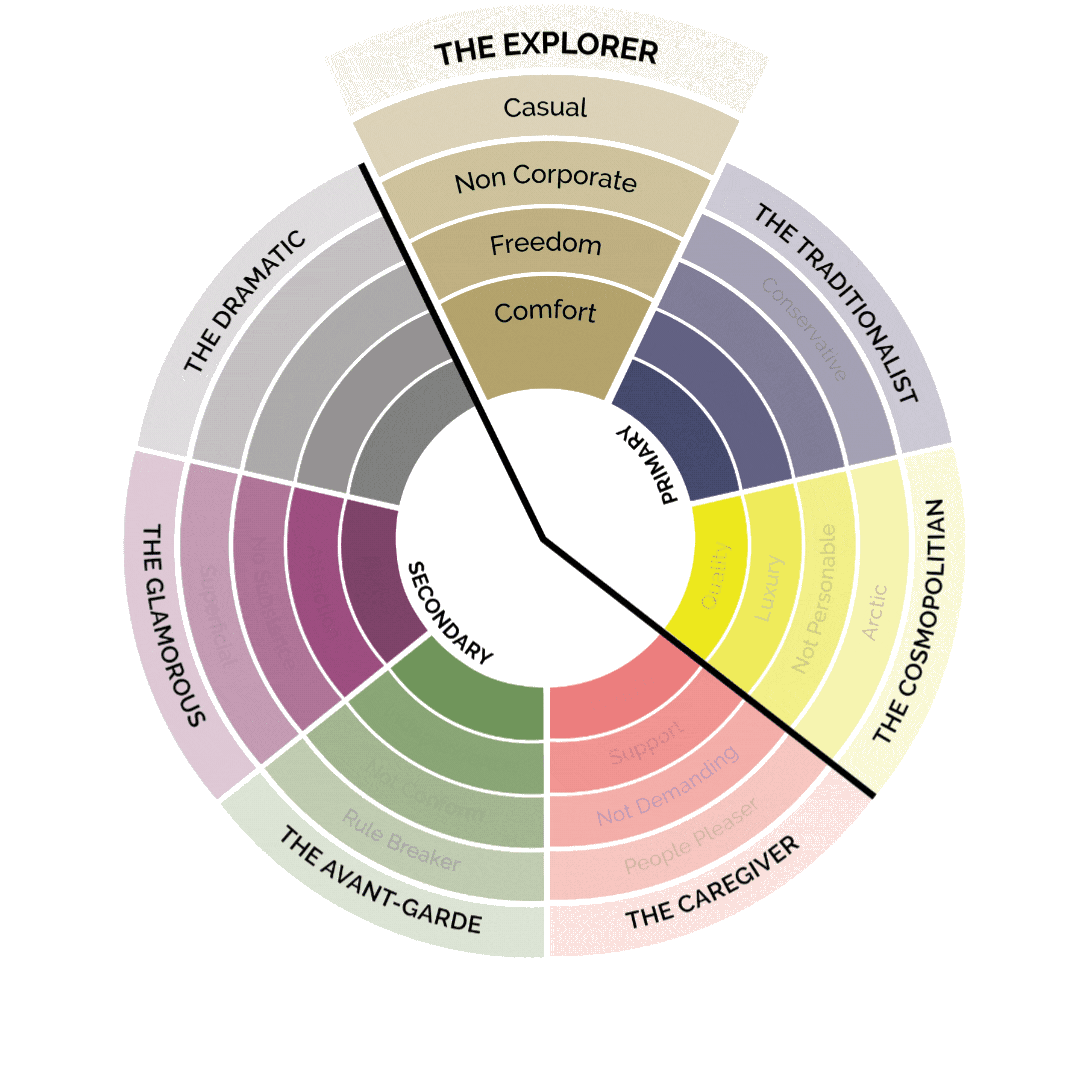Change Perception to See Possibilities Where Others See Problems
Ever feel like you’re trudging through the same routine, day in and day out, wondering why everything feels so…uninspired? It’s easy to overlook how much your perception shapes your experience—not just in life but also at work. How you see challenges, colleagues, or even opportunities can either keep you stuck or set you free. Learning to change perception doesn’t mean ignoring reality; it’s about rethinking how you approach it. For instance, that feedback from your boss? It might not be criticism—it could be an invitation to grow. Or that tedious project? Maybe it’s a chance to showcase skills no one’s noticed yet. The workplace is full of moments waiting to be redefined.
What if the way you see the world is simply a reflection of your beliefs, and shifting those beliefs could change your entire reality?
Key Takeaways
- Your perception shapes your understanding and reaction to the world
- Recognizing and challenging negative perceptions can lead to profound personal growth
- Empathy and a growth mindset are key to changing your perspective
- Gratitude and positive affirmations can significantly alter your outlook
- Surrounding yourself with positive influences helps maintain a new perception
Understanding the Power of Perception

Perception isn’t just about taking in information; it’s how you make sense of everything around you. Think of it as your personal filter—it colors how you interpret situations, make decisions, and even how you interact with others.
At work, this filter plays a massive role in shaping your experiences. Does that challenging project feel like a burden or a chance to shine? That depends entirely on your perception. Your current perception can either box you in or open up new possibilities, shaping the outcomes of your actions.
Exploring the Influence of Perception on Reality
Your perception is like a lens you use to view the world—it’s always there, shaping what you see and how you interpret it. At work, this lens can turn the same situation into two completely different stories for different people, depending on their perspective. For example, imagine you receive constructive feedback. One person might see it as criticism and shut down, while another views it as a chance to grow and improve. The difference? Perception. It doesn’t just dictate how you feel; it determines your next steps, your confidence, and ultimately your success.
Perception also influences your core beliefs about yourself and your capabilities. If you believe you’re resourceful and adaptable, you’ll approach problems as puzzles to solve rather than barriers to avoid. At work, it’s not just about what happens—it’s about how you choose to see it. Changing your perception can redefine what’s possible.
Ways Perception Impacts Your Behavior
The way you perceive things has a direct impact on how you act and can significantly influence behavior in both yourself and others. Think about your day-to-day tasks: when you see a project as meaningful, you dive in with energy and focus. But when it feels tedious or pointless, your motivation plummets and the quality of your work will suffer.
Misguided perceptions can also hold you back. If you view yourself as incapable or unworthy, you will likely avoid taking risks or pursuing growth opportunities. But here’s the good news: awareness is the antidote. Once you recognize the perceptions shaping your actions, you have the power to change them. Shift your lens, and you’ll find that what once felt impossible now feels within reach. At its core, perception isn’t just about how you see the world—it’s about how you let the world see you.
The same storm can be chaos to one person and renewal to another—perception is the difference.
Identifying Negative Perceptions

Before you can shift your perception, you first need to confront the beliefs and thought patterns that are holding you back. These aren’t always obvious—sometimes they lurk in the background, quietly influencing how you see yourself and the world around you.
At work, they might show up as self-doubt during meetings, hesitation to take on new challenges, or an inner voice telling you, “I’m just not capable.”
Acknowledging Limiting Beliefs
Think of limiting beliefs as invisible walls. They’re built brick by brick from past experiences, failures, or even offhand remarks that you internalized as truths. Phrases like “I’m not cut out for this role” or “I’ll never be good at public speaking” can become mental barriers that stop you from even trying. These beliefs might seem like protection against failure, but in reality, they restrict your potential, shape your identity, and reinforce the very fears you’re trying to avoid.
In the workplace, these limiting beliefs can have a ripple effect. They might make you shy away from leadership opportunities or convince you that your ideas aren’t worth sharing in a meeting. But the truth? Those beliefs are often lies you’ve told yourself over time. Becoming aware of them is the first step toward dismantling them. Self-awareness allows you to challenge these false narratives and replace them with empowering truths like, “I can learn,” or, “I am capable.”
Recognizing Patterns of Negative Thinking
Negative thought patterns, deeply rooted in psychology, are like potholes on the road to progress—they trip you up before you even realize what’s happening. Maybe you catch yourself catastrophizing about a missed deadline, thinking it will ruin your career. Or perhaps you overgeneralize, believing one piece of critical feedback means you’re failing overall. These patterns don’t just drain your confidence; they shape how you interact with people, how you approach tasks, and how you perceive your own abilities.
Notice when you slip into cycles of negativity and ask yourself, “Is this thought actually true?” or “Could a different viewpoint reveal a more constructive perspective?” The more you practice reframing these thoughts, the more you’ll notice a shift in your mindset. For example, instead of thinking, “I’ll never be good at this,” try, “I’m still learning, and that’s okay.”
Negative beliefs are thieves—they steal opportunities before you even see them.
Challenging and Questioning Your Thoughts: Share the Real Story

To truly change your perception, you must first challenge the thoughts that shape it. This means taking a step back and asking yourself: “Is this really true, or is it just the story I’m telling myself?” The workplace is full of moments where unchecked assumptions can influence how you approach situations—whether it’s doubting your ability to lead a project or assuming a colleague’s feedback is a personal attack. The goal here isn’t to dismiss your thoughts but to examine them critically and separate fact from fiction.
Examining the Validity of Your Perceptions: Is Your Information Accurate?
Not every perception you hold is rooted in reality. Often, assumptions, biases, or incomplete information distort your view of a situation. Maybe you assume your boss is unhappy with your work because of a single vague comment, or you believe a team member doesn’t like you because they seem distant.
Taking a rational approach to examine these perceptions can reveal surprising truths and expand your knowledge of the situation. Ask yourself: “What evidence do I have for this belief? Could there be another explanation?” For example, instead of jumping to conclusions about a terse email, consider whether the sender might just be having a busy day. This habit of questioning your thoughts fosters clarity and reduces unnecessary stress.
Reframing Negative Thoughts: How Reliable is Your Information?
Reframing is a game-changer when it comes to shifting your perception. It’s about paying attention to a situation from a different point and changing the story you tell yourself. For instance, if you miss a deadline, it’s easy to spiral into thinking, “I’m not good at this job.” But what if you reframed it as, “I need to adjust my time management skills, and this is a chance to improve”? This shift doesn’t erase the challenge, but it changes how you react to it emotionally.
A difficult client might become a test of your problem-solving skills. A critical performance review could become a roadmap for growth. By focusing on solutions instead of problems, you empower yourself to take proactive steps forward. Over time, practicing this mindset will help you cultivate resilience and see setbacks as valuable lessons rather than insurmountable failures.
If your thoughts aren’t serving you, why are you serving them?
Shifting Your Perspective

Shifting your perspective is like hitting the refresh button on your outlook. It’s about choosing to see the world—and your place in it—through new, more expansive lenses.
Empathy is the cornerstone of this transformation, helping you see opportunities where others see obstacles and build stronger connections with those around you.
Practicing Empathy and Compassion
Empathy is like a superpower that allows you to step out of your own shoes and into someone else’s. By seeing the world from another person’s perspective, you gain valuable insights into their experiences and emotions, which can enhance your relaciones and decision-making.
And then, compassion takes empathy one step further—it’s about choosing kindness and understanding even when it’s not easy. Imagine the impact of extending grace to a team member who’s struggling or responding to a mistake with support instead of frustration. These shifts in how you interact with others not only make you a better colleague but also deepen your own sense of fulfillment and awareness.
Adopting a Growth Mindset
A growth mindset is like seeing every challenge as a “what’s next” instead of a “what now.” It’s the belief that skills can be developed, failures are lessons in disguise, and roadblocks are temporary detours.
Instead of avoiding challenges, you start seeking them out, knowing they’ll make you better. A growth mindset creates a culture of continuous learning and improvement—not just for you but for your entire team. Over time, this mindset shapes how you perceive the world, making you more adaptable, proactive, and ready to tackle anything that comes your way. It’s not just about thriving in your career; it’s about unlocking a version of yourself that’s ready to grow, no matter what life throws at you.
Your comfort zone isn’t just small—it’s shrinking every time you stay in it.
Practicing Gratitude and Positive Affirmations

Gratitude and affirmations are like anchors for positivity, helping you steady your thoughts and shift your mindset. These tools are especially valuable for navigating the dynamic challenges of workplace stress or setbacks. Gratitude redirects your focus to what’s working, while affirmations reinforce your confidence and keep you moving forward.
Cultivating a Positive Outlook
Gratitude is more than just saying “thank you”—it’s a mindset shift that helps you focus on what you have rather than what you lack. At work, this could mean appreciating the small wins, like a colleague’s help on a project or the chance to learn something new, instead of dwelling on missed opportunities or setbacks.
Over time, regular gratitude rewires your brain to notice the positives more naturally. This not only improves your mental salud but also shifts your perception of reality, making you more likely to see opportunities and solutions where others see obstacles. Gratitude is the bridge between where you are and the positive experiences waiting to unfold.
Using Affirmations to Change Your Mindset
Affirmations are like pep talks you give yourself—they reinforce positive beliefs and challenge the self-doubt that can creep in during tough times. For instance, saying, “I am capable of learning new skills” can shift your focus from fear of failure to a belief in your ability to adapt and grow.
The magic of affirmations lies in their consistency. Repeating positive affirmations daily—whether aloud, written down, or silently in your mind—gradually embeds these beliefs into your subconscious. Over time, these affirmations might foster habits and behaviors that reflect these beliefs, helping you show up as the best version of yourself.
Every "thank you" you whisper is a rebellion against negativity.
Investing Your Time in Building Positive Influences

The people you interact with and the environments you spend time in are like mirrors—they reflect and shape your mindset and outlook. At work, this can mean the difference between feeling supported and inspired or drained and unmotivated.
Surrounding yourself intentionally with the right people and engaging in activities that foster positivity doesn’t just feel good; it actively shapes how you perceive and interact with the world.
Building a Supportive Network
Su red is more than just a group of colleagues, friends, or mentors—it’s your safety net, your cheerleaders, and your sounding board. Positive relationships withing your company or community have a profound impact on how you see yourself and your abilities. At work, a supportive network might look like a colleague who celebrates your wins, a manager who offers constructive guidance, or a mentor who helps you see your potential.
However, a strong network doesn’t just happen; it’s built intentionally. Seek out people who bring out the best in you—those who challenge you to grow while offering encouragement. Equally important is minimizing the influence of negative relationships that drain your energy or reinforce limiting beliefs.
Engaging in Activities that Promote Positivity
Sometimes, the simplest choices have the biggest impact on how you feel and perceive the world. Positive activities—like going for a walk during lunch, taking up a creative hobby, or joining a workplace fitness challenge—can shift your mood and energy levels in profound ways. These activities create mental space for joy and reflection, breaking up the monotony and stress of daily routines.
Outside of work, it could mean dedicating time to things that truly light you up, like spending time with family or pursuing a passion project. These small but meaningful actions elevate your mood, boost your confidence, and create a healthier perception of reality. Over time, they lead to habits that sustain a more optimistic and fulfilling outlook on life.
The energy around you becomes the energy within you—surround yourself wisely.
Taking Action and Changing Behavior for a More Fulfilling Life

Changing your perception isn’t just about shifting your mindset—it’s about taking deliberate, actionable steps to align your thoughts, habits, and behaviors with the life you want to lead. At work and in life, this means moving from “I wish things were different” to “Here’s what I’m going to do to make things different.” Clear goals provide the structure and consistency needed to create lasting change and redefine how you see yourself and the world around you.
Setting Goals and Taking Steps Towards Change
Clear goals are your roadmap to transformation. Without them, it’s easy to get lost in wishful thinking or feel overwhelmed by where to start. Goals give you a sense of direction and purpose, breaking big changes into manageable steps for the future. At work, this could mean setting a goal to improve a specific skill, build stronger relationships with colleagues, or take on a leadership role. Each small win along the way builds momentum, confidence, and a sense of progress.
However, only taking action don’t these goals is where the real magic happens. It’s not enough to simply set goals—you need to move toward them consistently. This might look like blocking time on your calendar for focused work, signing up for a professional development course, or even seeking feedback from a mentor.
Implementing New Habits to Support Your New Perception
Habits are the building blocks of your reality. They shape your daily life and reinforce the way you see yourself and your place in the world. If your perception has been rooted in self-doubt or negativity, creating new habits can help shift that narrative. For example, starting your day by listing three things you’re grateful for can set a positive tone, while ending the day with a reflection on your accomplishments can build self-confidence.
The key to habits is consistency—small, intentional actions repeated over time create lasting change. Positive habits don’t just support your growth; they create a ripple effect that aligns your mindset, behaviors, and reality.
Change doesn’t come from wishing—it’s born in the small, messy steps you take every day.
Embracing Growth Mindset

A growth mindset isn’t just about staying positive—it’s about seeing every challenge and setback as an opportunity to learn, adapt, and grow.
At work, this might mean approaching a tough project as a chance to develop new skills or viewing constructive feedback as a gift rather than criticism. This mindset shift allows you to reframe obstacles not as roadblocks, but as stepping stones to personal and professional growth.
Embracing Challenges as Opportunities for Growth
Challenges are often where the most growth happens. Think of them as the gym for your mind and spirit—they might feel uncomfortable in the moment, but they make you stronger in the long run. At work, stepping outside your comfort zone might look like taking on a leadership role for the first time, learning a new skill, or navigating a difficult conversation. These moments of discomfort push you to grow, helping you discover strengths and capabilities you didn’t realize you had.
When you view challenges as opportunities rather than obstacles, your perception shifts. You begin to see hurdles not as things to avoid but as invitations to stretch and grow. This doesn’t mean challenges become easy, but it does mean they become purposeful.
Viewing Setbacks as Learning Experiences
Setbacks are often seen as failures, but they’re actually some of life’s greatest teachers. Each misstep offers a chance to reflect, adjust, and move forward with more clarity and wisdom. In the workplace, this could mean turning a missed deadline into a lesson on time management or using a failed pitch as an opportunity to refine your presentation skills. These experiences aren’t just bumps in the road; they’re critical moments of growth.
Adopting this perspective doesn’t mean dismissing the frustration or disappointment that comes with setbacks—it means using those feelings as fuel to improve. The more you learn from your mistakes, the less intimidating challenges become. Over time, this mindset transforms not just how you handle obstacles, but how you see yourself and your potential.
Growth doesn’t live in the easy—it thrives in the uncomfortable and the unknown.
Living in Alignment with Your New Perception

Transforming your perception is a powerful step, but the real challenge lies in maintaining it. Living in alignment with your new beliefs means consistently reflecting those beliefs in your actions, decisions, and interactions.
Only when your actions match your perception, you create a sense of authenticity and purpose that not only supports your growth but also inspires those around you.
Aligning Your Actions with Your Desired Reality
Your actions are the tangible expression of your beliefs and play a critical role in shaping your reputation. If you’ve shifted your perception to see yourself as capable and resourceful, your behavior must reflect that. For example, if you believe in your ability to lead, you might volunteer to take charge of a team project or share your ideas more openly in meetings. Consistency in these actions reinforces your new self-perception and helps others see you in the same light.
Living in alignment with your new perception doesn’t just shape how others see you—it transforms how you see yourself. When your actions reflect your beliefs, they create a positive feedback loop that reinforces your confidence and motivation. Over time, these consistent actions bring your desired reality into focus, making it feel not just possible but inevitable.
Consistently Reinforcing Your New Perception through Feedback
Change isn’t a one-time event; it’s a continuous process of reinforcement. To solidify your new perception, you need to revisit and practice it regularly, taking control of the process to ensure lasting change. This could mean reflecting on your progress at the end of each day, seeking feedback from trusted colleagues, or setting reminders to celebrate small wins. These practices help keep your new mindset at the forefront, ensuring it becomes a natural part of who you are.
Consistency is key. It’s not about perfection but about showing up every day with the intention to align your actions with your beliefs. The more you practice, the stronger these habits and perceptions become. Over time, what once felt like effort will become second nature, allowing you to live fully in alignment with your transformed reality.
Living authentically means matching your behavior to your values—not someone else’s.
Harnessing the Power of Your Thoughts

Your thoughts are incredibly powerful—they influence how you see the world, interact with others, and ultimately shape your life. By practicing mindfulness and visualization, you can tap into this power and actively transform your perception and reality.
These techniques don’t just help you focus; they empower you to align your thoughts, emotions, and actions with your goals, creating a more intentional and fulfilling life.
Practicing Mindfulness and Awareness
Mindfulness is like hitting the pause button on the chaos of everyday life. It gives you the space to observe your thoughts and emotions without judgment, helping you understand how they influence your perception. At work, this could mean recognizing when self-doubt creeps in before a presentation or noticing how frustration with a colleague is shaping your interactions. Mindfulness allows you to see these patterns clearly, so you can respond thoughtfully instead of reacting impulsively.
When you’re mindful, you can catch negative thought loops and reframe them into something constructive. For example, instead of thinking, “I’ll never get this done,” mindfulness helps you shift to, “What’s the next step I can take to move forward?” This clarity doesn’t just reduce stress—it empowers you to make intentional choices that align with your goals and values, both at work and in life.
Using Visualization Techniques to Manifest Your Desired Reality
Visualization is like creating a mental rehearsal for success. By vividly imagining your goals and the steps to achieve them, you’re training your mind to focus and align your actions with your intentions. Picture yourself confidently leading a meeting, acing a job interview, or tackling a challenging task with ease. This mental imagery not only boosts motivation but also reinforces the belief that you’re capable of achieving what you set out to do.
The magic of visualization lies in its ability to bridge the gap between where you are and where you want to be. When you imagine a desired outcome, your brain starts seeking ways to make it happen, subtly guiding your actions and decisions. In the workplace, this could mean visualizing the successful completion of a big project or seeing yourself as a leader others respect and admire. The more you practice visualization, the more natural it becomes, helping you build confidence and resilience while shaping a reality that aligns with your aspirations.
Are you ready to embrace the power of perception and transform your reality for a more fulfilling and empowered life?
Your thoughts are the only thing you truly control—so why not make them your greatest ally?
ADDITIONAL RESOURCES
Law of Attraction (New Thought)
This Wikipedia article explores the Law of Attraction, a principle in New Thought philosophy suggesting that positive or negative thoughts bring corresponding outcomes into a person’s life.
FREQUENTLY ASKED QUESTIONS
Can changing my perception actually change my reality?
Yes, changing your perception can have a significant impact on your reality. When you shift your mindset and outlook on life, you begin to attract more positive experiences and opportunities. By focusing on the good in life and adopting a growth mindset, you can create a more fulfilling and successful reality for yourself.
How long does it take to change my perception and see results?
The time it takes to change your perception and see tangible results can vary for each individual. It depends on factors such as the depth of your current beliefs, the consistency of your efforts, and your willingness to embrace change. Be patient with yourself and confíe en the process, as small shifts in perception can lead to big changes in your reality over time.
What are some common challenges people face when trying to change their perception?
Some common challenges people face when trying to change their perception include resistance to change, fear of the unknown, self-doubt, and negative influences from others. It's important to stay committed to your personal growth journey, seek support from like-minded individuals, and practice self-care to overcome these challenges and continue transforming your reality.



